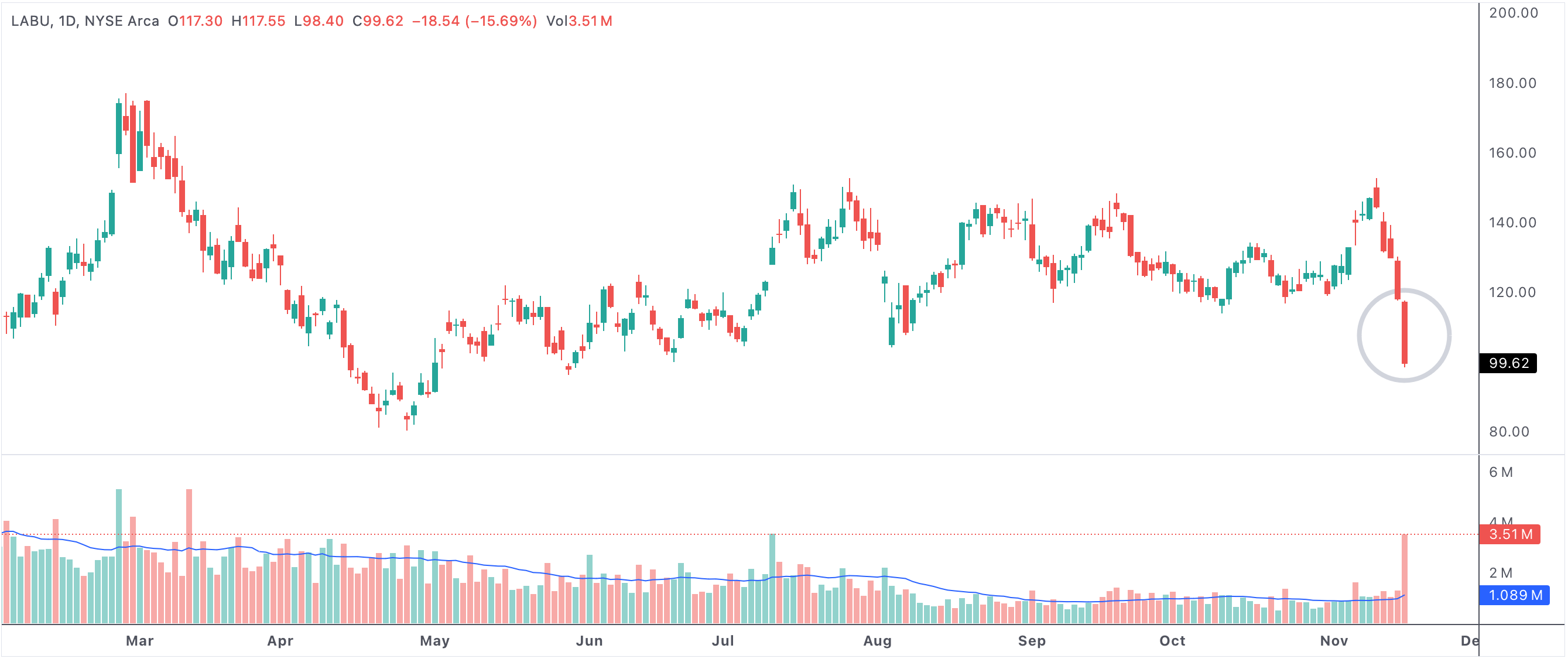Stocks with the biggest losses reveal high-risk periods and shifting sentiment
Identifying stocks with the biggest losses during a set period is crucial for traders and investors who want to assess market risks, understand shifting sentiment, and spot both dangers and opportunities. Dramatic price declines can result from earnings disappointments, negative news, sector-wide downturns, or broader economic challenges, but they can also set the stage for potential rebounds or value entries if conditions stabilize.

biggestlosers
A sample chart highlighting a stock experiencing a substantial loss over a short time.
Stocks with the biggest losses in a given period
Why Big Losers Matter for Market Analysis
The biggest stock losses often capture headlines and spark conversations about company health and sector strength. These losses can arise from many factors—missed earnings expectations, regulatory scrutiny, industry disruptions, or geopolitical shocks. By tracking these high-loss stocks, investors can gauge areas of market vulnerability, identify which sectors are under the most pressure, and see how fear is spreading through financial markets.
Common Triggers Behind Steep Price Drops
Several factors can drive dramatic losses in stocks:
- Poor earnings reports: Missing analyst estimates or lowering future guidance can lead to sharp price corrections as investor confidence fades.
- Sector-wide downturns: When an entire sector is hit by negative news—like technology regulation, commodity price swings, or supply chain issues—losses can be severe and persistent.
- Macroeconomic risks: Rising interest rates, inflation surprises, or recession fears can push stocks, especially high-growth names, into steep declines.
- Company-specific events: Lawsuits, management changes, or failed product launches often trigger outsized losses for individual stocks.
Bearish Momentum and Investor Psychology
Stocks suffering the biggest losses often become the focus of short-sellers and nervous investors looking to reduce exposure. As prices fall through key technical levels—such as 50-day or 200-day moving averages—selling can accelerate. Negative momentum feeds on itself, leading to panic selling, margin calls, and forced liquidations, particularly in highly volatile environments.
For many, these steep drops reinforce bearish sentiment and signal more pain ahead. For others, however, severe sell-offs may mark a capitulation point, where fear reaches extremes and some contrarian investors begin to look for long-term bargains.
Trading and Investing Strategies for High-Loss Stocks
There are several approaches to handling stocks with the biggest losses:
- Risk management: Active traders may exit or hedge positions in stocks making the biggest declines, reducing exposure to further downside.
- Short selling: Some traders seek to profit from continued downward momentum by selling short, particularly if fundamentals remain weak or broader market sentiment is negative.
- Bottom fishing: Contrarian investors might look for deeply oversold stocks that have fallen out of favor, seeking signs of a potential turnaround such as insider buying, stabilizing fundamentals, or improving technical indicators.
- Sector rotation: Observing which sectors are suffering the biggest losses can help investors reallocate capital to stronger or defensive industries.
Using Technical and Fundamental Clues
Stocks with the biggest losses often trigger technical analysis alerts—such as breaking below support or forming bearish chart patterns. Monitoring volume spikes can also offer insight, as heavy volume during declines suggests institutional selling or panic among retail traders.
Fundamentals play a role too. Persistent losses tied to worsening earnings, declining revenues, or sector headwinds may signal prolonged trouble. On the other hand, temporary drops due to market overreactions or broader corrections can sometimes present opportunities for disciplined, well-researched entry.
Final Thoughts on Biggest Loss Stocks
In summary, stocks with the biggest losses are critical for understanding current market risk and sentiment. While they can warn of persistent weakness, they may also flag sectors or stocks nearing a bottom. Careful analysis—blending technical signals, fundamental context, and macro trends—can help traders and investors make more informed decisions around these volatile names.